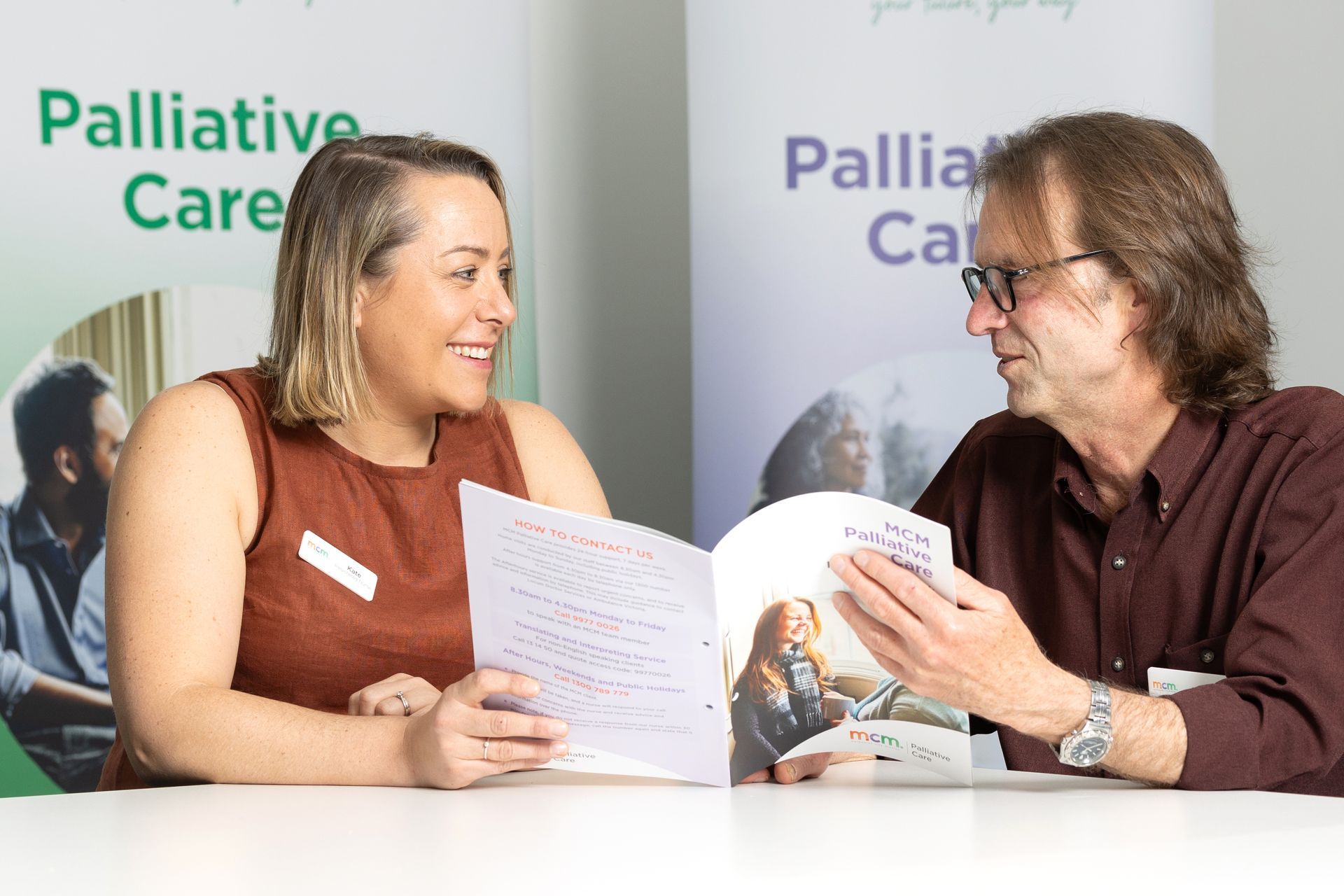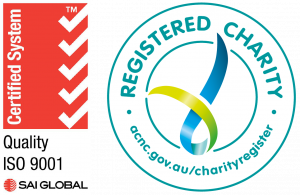Helping people reach the end of the final chapter
Pictured:
Melbourne City Mission's palliative care nurses
Ian Millard (L) and Kate Crosbie.
Therefore, send not to know
For whom the bell tolls,
It tolls for thee.
- John Donne
Add your title here
This is the text area for this paragraph. To change it, simply click and start typing. Once you've added your content, you can customize its design by using different colors, fonts, font sizes and bullets. Just highlight the words you want to design and choose from the various options in the text editing bar.
This is the text area for this paragraph. To change it, simply click and start typing. After adding your content, you can customize it.
Death comes to us all, and being cared for and dying at home is most people’s preference. To make this a reality for as many people as possible, the Australian Government’s Greater Choice for At Home Palliative Care (GCfAHPC) program provides funding for primary health networks to innovate and coordinate access to palliative care.
NWMPHN is very active in this field, not least because our priority populations include older people, aged care home residents, and people with complex and chronic illness.
We have, for instance, developed a suite of education and training resources for GPs and other primary health service providers. These include clinical support web pages on advance care planning and palliative care, which are backed up by several quality improvement activities focused on timely referrals and practical aspects of end-of-life care.
HealthPathways Melbourne contains pages and case studies on
clinical management and support for palliative care. These are regularly reviewed and, where necessary, updated to reflect changes to regulations or prescribing guidelines.
Evidence based, client-centred and coordinated …
Clinicians can also consult our guides to MBS items related to end-of-life care, and in-depth descriptions of primary care roles and responsibilities for advance care planning.
NWMPHN is part of the North and West Metropolitan Region Palliative Care Consortium, along with major hospitals, palliative care providers and other community service organisations.
The group supports initiatives that ensure palliative care services in our catchment remain contemporary, evidence based, client-centred and coordinated, and reflect the varying needs of the region’s population.
One such initiative is a palliative care education service for general practice.
Funded by NWMPHN and delivered by consortium members Melbourne City Mission, Mercy Health and Banksia Palliative Care Service, the project offers general practices the opportunity to connect with local community-based palliative care providers.
Providers visit clinics and offer information, education, and support to GPs, nurses and non-clinical staff, helping them better assist patients who are managing life-limiting conditions. They performed 15 practice visits since January 2023.
Kate Crosbie is a clinical nurse specialist at Melbourne City Mission and one of our team of palliative care experts. She says that everyone has a different idea of how they can die well and with dignity.
This might include a person’s cultural, spiritual or religious beliefs, as well as simply understanding what to expect as they reach the end of life. It may also mean retaining control over pain relief, other symptoms and their chosen site of death, as well as resolving regrets, saying goodbye and reconciling damaged relationships.

Pictured: Kate Crosbie (L) and Ian Millard.
“From a healthcare professional’s perspective, a ‘good death’ looks like the healthcare community coming together for the patient and their carers,” says Kate.
“A good death happens when the community palliative care service, a patient’s general practitioner and other treating teams collaborate to ensure that the patient’s care goals and site of death can be met in a dignified manner.”
The transition from acute hospital services to community-based care can mean that a GP hasn’t seen a patient for quite some time.
A strong relationship between a patient, their GP and community palliative care providers like Melbourne City Mission is essential as a person reaches the end of life. It means scripts for managing symptoms can be quickly obtained and administered.
With clear communication between services, medical certificates of cause of death can also be completed in a timely fashion. This helps avoid delays in funerals, which can be distressing for families and has cultural and financial implications.
Kate says that visiting medical clinics and meeting the GPs who care for Melbourne City Mission’s patients is helping both parties better understand their roles and support each other to work to the top of their scope.
“We hope that GPs are more confident in referring patients and in managing their symptoms, as well as feeling prepared in managing end-of-life care,” she says.
“This collaboration can only be a positive benefit for patients and their carers to feel well supported at this stage of their illness.”
Producing tangible measures to help people …
While these practice visits and our other resources are directed primarily towards health service providers, NWMPHN is also making a significant impact for members of the public who are dealing with end-of-life conditions – and those who love and care for them.
Across 2022–23 we have continued to build and expand Precious Time, a website examining multiple aspects of dying and death. The site features resources, advice, conversation-starters, and blog items. It also has a searchable database containing information and contacts for several hundred organisations that provide services related to end-of-life care.
One goal for the coming years is to see other primary health networks join with us to expand Precious Time’s resource base, turning it eventually into a truly national asset. Discussions are already underway, and we look forward to exploring options for growth.
During 2022–23 Precious Time received a significant accolade when it was selected by the Australian Government Department of Health and Aged Care as a good example of how GCfAHPC funding is producing tangible measures to help people achieve a comfortable and peaceful passing.
We are proud of our work in palliative care, and look forward to its continued development.
The Department of Heath and Aged Care commissioned documentary filmmakers 89 Degrees East to make this video showcasing the Precious Time website.
Our STORIES
Keep up to date with the latest news and publications, funding opportunities, careers and upcoming events at NWMPHN.

